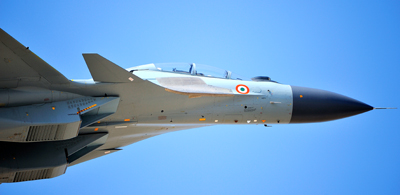INDIAN ARMED FORCES CHIEFS ON OUR RELENTLESS AND FOCUSED PUBLISHING EFFORTS

The insightful articles, inspiring narrations and analytical perspectives presented by the Editorial Team, establish an alluring connect with the reader. My compliments and best wishes to SP Guide Publications.

"Over the past 60 years, the growth of SP Guide Publications has mirrored the rising stature of Indian Navy. Its well-researched and informative magazines on Defence and Aerospace sector have served to shape an educated opinion of our military personnel, policy makers and the public alike. I wish SP's Publication team continued success, fair winds and following seas in all future endeavour!"

Since, its inception in 1964, SP Guide Publications has consistently demonstrated commitment to high-quality journalism in the aerospace and defence sectors, earning a well-deserved reputation as Asia's largest media house in this domain. I wish SP Guide Publications continued success in its pursuit of excellence.
A Giant Leap forward

Is the IAF overawed by the prospect of operating sophisticated fighters? Not by any measure. As evidence is an enviable record of successfully inducting technologically advanced aircraft and equipment.
Six aircraft manufacturing giants eyeing a shopping list of 126 fighters propped by an estimated budget of a whopping Rs 45,000 crore ($10 billion)—India’s most ambitious drive to procure Medium Multi-Role Combat Aircraft (MMRCA) for the Indian Air Force (IAF) is gathering speed. The frontrunners have submitted individual proposals and in contention are some of the most advanced fighters in the world: the Russian MiG-35, the JAS-39 Gripen from Sweden’s Saab, the Dassault Rafale from France, the Eurofighter Typhoon from the European Consortium, and Lockheed Martin’s F-16 Fighting Falcon and Boeing’s F/A-18 Super Hornet from the US. IAF field trials are scheduled later in the year.
By 2017, the joint Indo-Russian Fifth Generation Fighter Aircraft (FGFA) envisaged by the IAF to meet its futuristic requirements could also be inducted. The FGFA is planned with a potent mix of stealth, super-manoeuvrability, supersonic cruise, long-range strike and high-endurance air defence capabilities. In addition, there is the much awaited LCA, Tejas. Is the IAF overawed by the prospect of operating such sophisticated fighters? Not by any measure.
As evidence is an enviable record of successfully inducting technologically advanced aircraft and equipment. In 1963, the ear-shattering roar of the Soviet MiG-21 announced the IAF’s entry into the supersonic age. The aircraft was at the top of its class and swiftly became the mainstay of the fleet. Switching from Gnats and Hunters to the supersonics was undoubtedly a steep learning curve, as numerous MiG-21 losses proved. Pilots and technicians had to get used to advanced aerodynamics and airframes, engines, avionics and weapons. Many other MiG variants followed, culminating in the MiG-29. In its time, the MiG-25 strategic reconnaissance aircraft could operate at will beyond the reach of hostile interceptors or missiles. The Jaguar, with its awesome bomb load, and the mighty Mirage 2000 multi-role combat aircraft also arrived, reducing the threat posed by the Pakistan Air Force’s (PAF) F-16s to pedestrian. The last Russian aircraft to be inducted was the Su-30MKI, which will form the backbone of the IAF fleet for decades. Is it any wonder that the MiG-35 is now a strong contender for the prized MMRCA contract?
In sum, between 1978 and 1988, around 20 new aircraft types and sub-types—strike fighters, third-generation supersonic interceptors, tri-sonic reconnaissance aircraft, strategic heavy lift transports, medium tactical transports, light transports, heavy lift and medium-assault helicopters and basic trainers—were added to the IAF inventory, plus surface-to-air missiles and an array of lethal weaponry.





